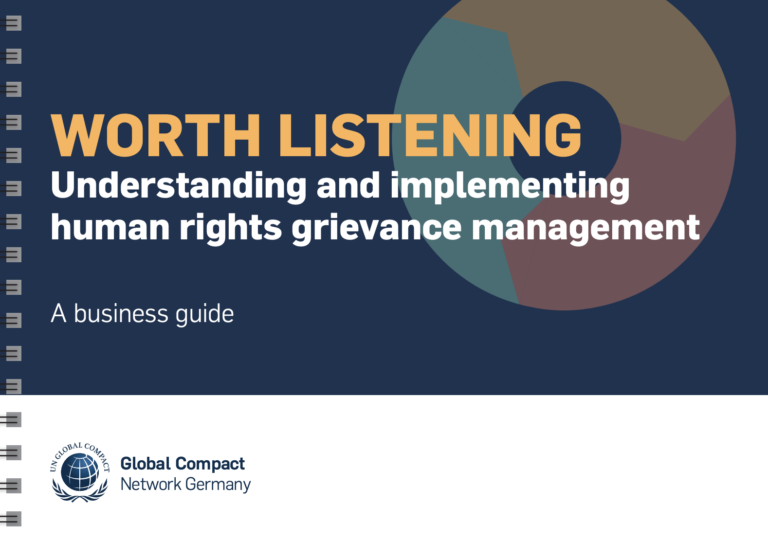Guiding Principles on Business and Human Rights
The UN Guiding Principles on Business and Human Rights are a set of guidelines for States and companies to prevent, address and remedy human rights abuses committed in business operations. child labour
This guide is intended to assist companies, including small and medium-sized enterprises (SMEs), in designing effective human rights grievance mechanisms. It provides practical advice and case studies, which show that a business is not expected to come up with a perfect, one-size-fits-all solution. Rather, effective grievance management is about providing multiple access points through which those who might be negatively affected by a company’s actions can get in touch. What exactly such an “ecosystem of grievance mechanisms” looks like will depend on the company’s business structure and risk profile.
This guide helps develop an approach to grievance management that is in line with the requirements of the UN Guiding Principles on Business and Human Rights (UNGPs).

The UN Guiding Principles on Business and Human Rights are a set of guidelines for States and companies to prevent, address and remedy human rights abuses committed in business operations. child labour
The objective of these non-binding ILO general principles and operational guidelines for fair recruitment (hereafter “principles and guidelines”) is to inform the current and future work of the ILO and of other organizations, national legislatur...Read More
This report is a first attempt to document child sexual exploitation in itsvarious manifestations. It provides evidence on the scale of the problemand on what works in preventing and responding to child sexualexploitation, and signals the areas wher...Read More
Since 2013, the number of British nationals referred into the National Referral Mechanism (NRM) as potential victims of modern slavery has increased year on year, rising from 90 in 2013 to 3,952 in 2021. These figures include potential adult and chi...Read More
The OECD Guidelines for Multinational Enterprises are recommendations addressed by governments to multinational enterprises operating in or from adhering countries. They provide non-binding principles and standards for responsible business conduct in...Read More